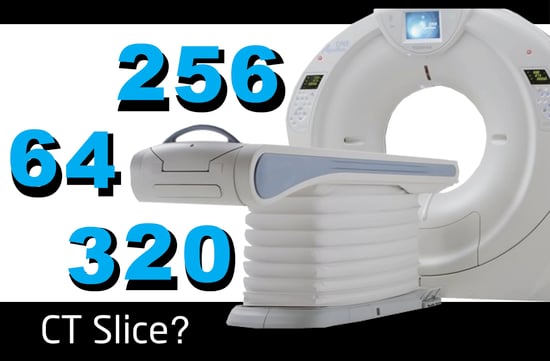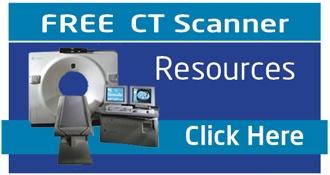With more and more emphasis on cost savings in the healthcare field, is the cost of a 256-Slice or 320-Slice CT worth  the higher expense than a standard 64-Slice system for
the higher expense than a standard 64-Slice system for
cardiac imaging? The experts at Atlantis Worldwide took a look and here’s what their thoughts are.
As a rule, a 256-Slice CT scanner will run about double the cost of a 64-Slice, and the 320-slice will run about 2.5 times the cost of a 64-slice. That’s a lot of cash. However, according to those who have adopted the 256- or 320-Slice systems say the image quality is vastly superior, which leads to better diagnoses in CT angiography.
Professor of Radiology and Medicine at the University of Chicago Medical Center Michael Vannier, M.D., FACR said, ““In an ideal world you have patients with low heart rates, they can hold their breath and they don’t have lots of disease. With these conditions you can get great images with just about any CT scanner,” he said
But many cardiac patients aren’t in great shape. They don’t have low heart rates and may not be able to hold their breath and stay still. In those situations their conditions are better suited for the high-slice systems,. After all, they’re faster and offer a larger imaging area. That’s why Vannier and the University of Chicago Medical Center purchased a Philips 256-slice Brilliance iCT system.
“The 256-slice scanner costs substantially more than the 64-slice systems. We were skeptical at first, but it was apparent from the start the quality of the exams were much better,” Vannier said. “I don’t think any of our physicians would use a 64-slice system anymore for these cardiac examinations. We were accustomed in the past to having some studies that were just uninterpretable. But today, that has largely gone away.”
A 32-Sice volume scan offer 16 cm of imaging area in one rotation which allows an image of the entire heart during one phase, rather than having to take multiple images with a 64-slice and then piecing them together. When they are stitched together, parts of the heart or vessels can be misaligned dur to cardiac movement. Table movement of 64-slice imaging can also cause artifact.
“In 64-slice images, the top and the bottom come from different times, but ideally you want to have an image of the heart from the same time,” said Michael Poon, M.D., FACC, professor of medicine and radiology, director of advanced cardiac imaging, Stony Brook University Medical Center, Stony Brook N.Y.
“That is the main problem with cardiac CTA imaging. Ideally you need a scanner that images the whole heart at once. That’s why the 320-slice scanner opens up a whole new era in cardiac imaging.”
Many cardiologists still insist that the 64-slice scan is adequate for cardiac imaging and doesn’t warrant the higher cost for the higher slice systems. “I don’t see a clinical need for a 320- or 256-slice scanner right now,” said James Min, M.D., director of the cardiovascular CT lab at New York Presbyterian Hospital and assistant professor of radiology at Weill Cornell Medical College. “I think we are looking at a three- to five-year process before the incremental benefit justifies the increased cost.”
That said, high volume centers can justify the expense of a higher-slice scanner. Poon said, “. “It is very expensive, but our emergency department (ED) is very busy,” Poon explained. Each CT scanner in the ED handles 50-60 cases per day, so there is no shortage of patients to help carry the cost burden.
However, there’s more than the system cost to consider. Other fixed costs include the cost of personnel to run the machine and the room where the CT equipment is located. The CT system also needs a good internal scheduling system, clear scheduling contact with patients, a process to get authorization from the payers and ways to relax and prep the patient for the study. Good post-processing software is also needed, and remote and home access is important for efficiency.
Trying to determine if 64, 256 or 320-Slice is the way to go? Talk to the experts at Atlantis Worldwide. They’ll help you weight out all the factors so you can make an informed decision.
Some blogs you may have missed:
Meet the author: Vikki Harmonay




